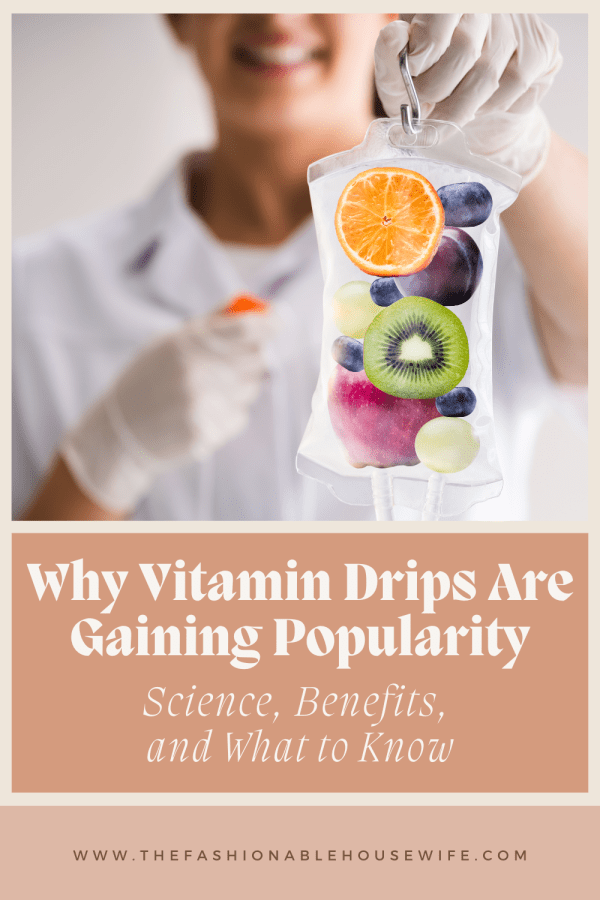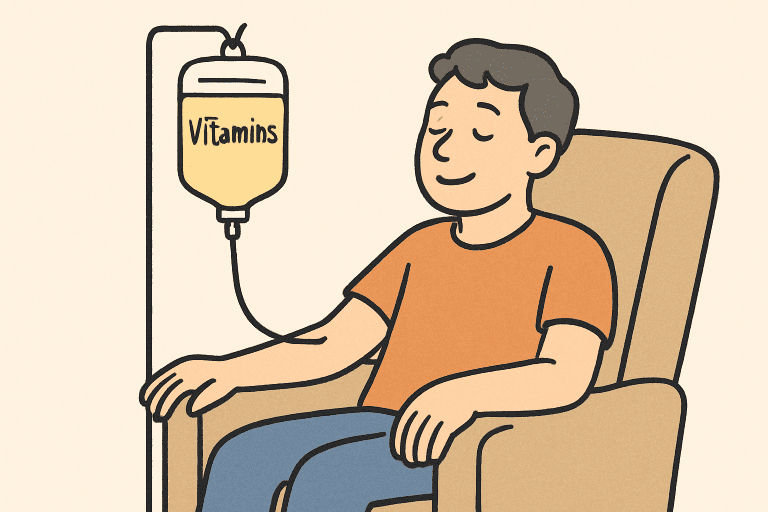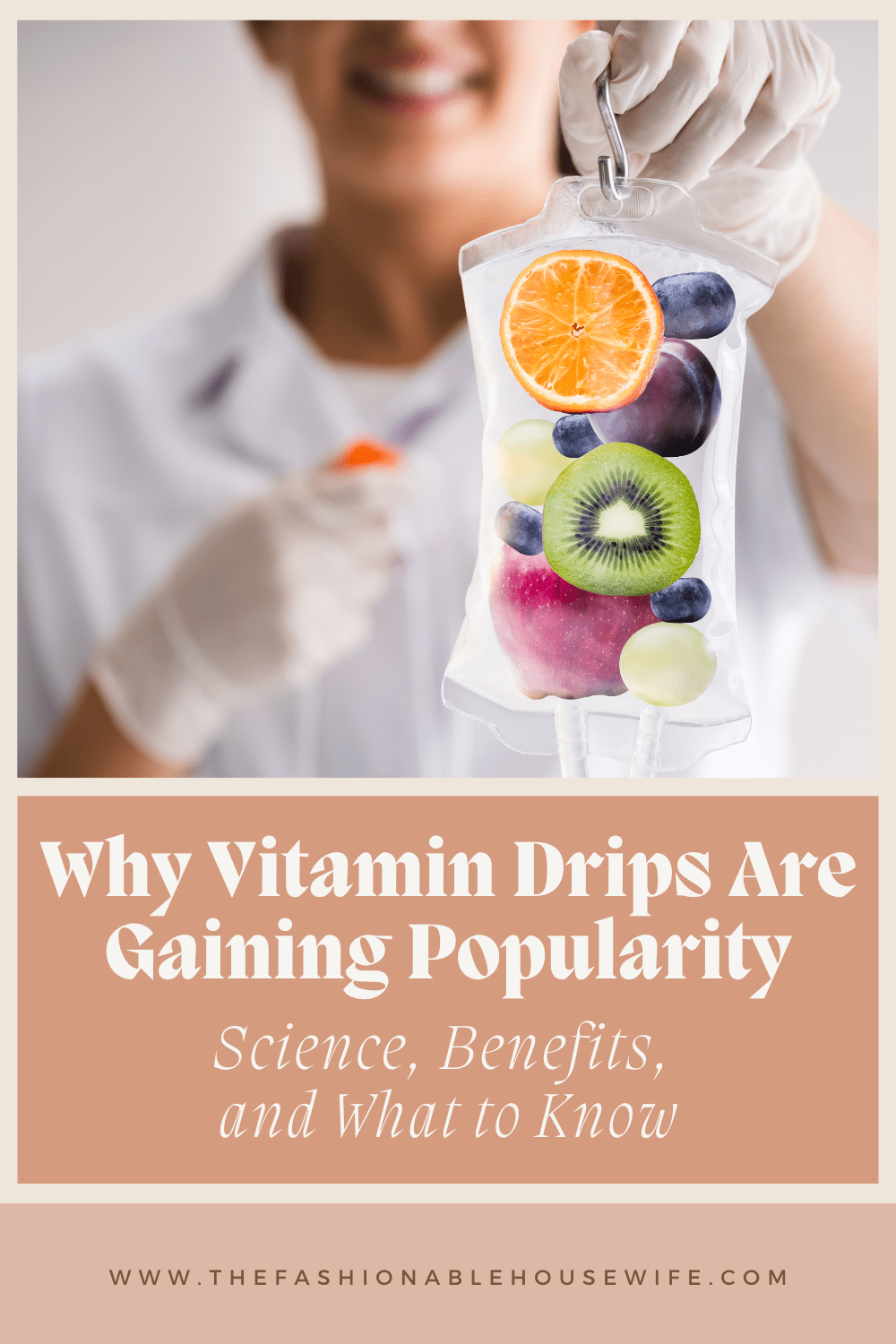Why Vitamin Drips Are Gaining Popularity: Science, Benefits, and What to Know

Key Takeaways
- Vitamin drips, also known as IV therapy, provide a direct infusion of nutrients to the bloodstream.
- Scientific research supports some benefits, including rapid hydration and replenishment for specific deficiencies.
- Not everyone will benefit equally from vitamin drips—consult a healthcare provider before trying them.
- Many people use drips for wellness, energy, and recovery, but individual experiences vary.
- Before choosing vitamin drip therapy, cost, safety, and efficacy should be considered.
What Are Vitamin Drips?
Vitamin drips—or intravenous (IV) vitamin therapy—involve delivering a customized mix of vitamins, minerals, and fluids directly into the bloodstream. Unlike oral supplements, this method bypasses the digestive system, allowing nutrients to enter the bloodstream more efficiently and, in some cases, rapidly address specific health goals.
Typical vitamin drips may include vitamin C, B vitamins, magnesium, calcium, and electrolytes. Many clinics even offer at home IV treatments, making this wellness trend more accessible than ever. The treatment usually takes 30–60 minutes, during which you sit comfortably while the nutrient solution is administered via a small catheter.
The Science Behind IV Therapy
Delivering nutrients intravenously can result in higher absorption rates, particularly for individuals with gastrointestinal issues or certain nutrient deficiencies. When you take supplements orally, much of the nutrient content may be lost during digestion. IV therapy can achieve rapid rehydration, and specific clinical applications—like correcting severe deficiencies in hospitals—are well-documented.
Scientific studies have found limited but promising evidence for IV vitamin therapy in conditions such as dehydration, certain vitamin deficiencies, or chemotherapy side effects. For example, a 2022 review in JAMA Internal Medicine highlights potential benefits in monitored settings but notes that more robust studies are needed to confirm broader wellness claims. Health professionals are cautious, emphasizing that most healthy individuals do not require IV supplementation if they follow a balanced diet.

Potential Benefits of Vitamin Drips & IV Therapy
The benefits of vitamin drips depend largely on individual health needs. IV therapy can offer speedy hydration and replenishment for people recovering from illness, dehydration, or vitamin deficiencies. Some report feeling revitalized, energized, and more mentally clear after treatment. Athletes have also embraced it for post-event recovery and rehydration.
It’s worth noting that some of the energy and mood boosts reported may be due to the placebo effect or individual differences in metabolism. Furthermore, while anecdotal benefits are abundant, scientific support for routine use in healthy populations remains limited. Still, the growing demand for vitamin infusions is fueled by positive word-of-mouth and testimonials.
Risks and Considerations
Vitamin drips aren’t without risks, especially when administered outside controlled medical environments. They may not be safe for individuals with certain medical conditions, such as heart or kidney disease, or those prone to allergic reactions. Side effects can range from mild (bruising or discomfort at the injection site) to severe (infection, vein inflammation, or electrolyte imbalances).
For optimal safety, seek experienced, licensed healthcare providers and ensure sterile equipment. Ask about ingredient sourcing and dosage to confirm the therapy suits your needs. Poorly administered IV therapy or unqualified providers can put your health at significant risk. Patients should also disclose all medications and supplements they are taking, as certain combinations may cause harmful interactions. Monitoring during and after the procedure is important to catch early signs of complications. It’s also wise to start with lower dosages rather than aggressive formulas to reduce the chance of adverse effects. Even with precautions, individuals should view vitamin drips as supplementary, not a replacement for a balanced diet or medical treatment. Ultimately, a cautious approach ensures that potential benefits do not come at the expense of long-term health.
Why the Trend Is Spreading
Vitamin drips owe much of their popularity to celebrity endorsements and the rise of wellness culture on social media. Portable drip services—sometimes available in spas, hotels, or even at home—offer fast results and the allure of quick recovery or stress relief. This image of health optimization appeals to busy professionals, athletes, and those seeking wellness enhancements beyond traditional nutrition.
Generational attitudes also play a role; Millennials and Gen Z are more open to integrating alternative and preventative treatments into their lifestyles. While these drips were once associated with elite circles, they’ve become increasingly mainstream, mirroring a growing desire for personalized, convenient healthcare options. Some consumers view them as a modern form of self-care, aligning with the broader trend of biohacking and body optimization. Critics, however, caution that marketing often overshadows scientific evidence, creating misconceptions about their effectiveness. Regulatory scrutiny is also growing as health authorities examine safety claims and treatment standards. At the same time, clinics and providers continue to expand offerings, highlighting hydration, immunity, and energy-boosting formulas. The future of vitamin drips will likely depend on stronger research, clearer regulations, and consumer education about their true benefits and limitations.
What to Ask Before Getting a Vitamin Drip
Before booking a session, ask your healthcare provider several key questions: Is IV therapy appropriate for your health status and goals? What ingredients will be used, and in what doses? Can your provider handle medical emergencies? How is the sterility and safety of the equipment ensured? Do you need this, or might a balanced diet suffice?
For peace of mind, use a checklist: verify practitioner credentials, read reviews, confirm ingredient transparency, and understand possible side effects. Only proceed when you’re informed and confident the provider adheres to rigorous safety standards.
Making the Right Choice On IV Therapy
Vitamin drips can be appealing for quick nutrient replenishment or recovery, but they aren’t a one-size-fits-all solution. The science supports benefits for specific deficiencies or medical needs, yet the value for general wellness remains less specific. Weigh the costs, potential benefits, and risks carefully, and consult with healthcare professionals before starting IV therapy.
Ultimately, making an informed choice about vitamin drips means staying grounded in science, understanding what you hope to gain, and prioritizing your health and safety.

